I imagine most people have heard of the ‘Great Leap Forward’, the ill-fated Chinese attempt to industrialise in the 1950s. What you may not know so much about is the Super Great Leap Forward, a truly ingeniously named programme initiated by the Khmer Rouge. Now, who are the Khmer Rouge? If you’ve got like… An hour to kill, I’ve done a massive series of blogs on the history of their rule, from foundation to dissolution. I’ll warn you though, it’s not the most pleasant of reads. The brief time from 1975 to 1979 that they were in power was among the bloodiest regimes of the cold war.
The Context
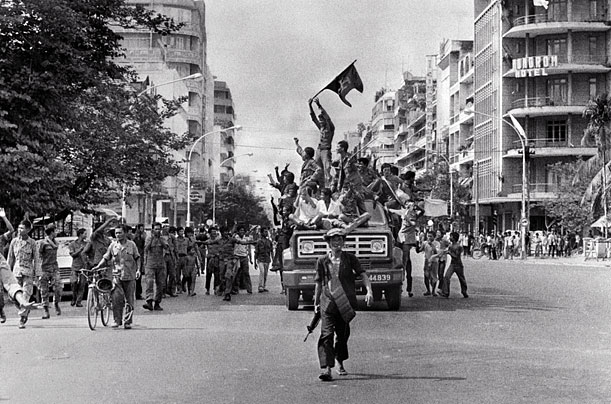
So if you weren’t willing to read that whole series of articles, I don’t blame you. So I’ll just give you a quick summary of what led to the Super Great Leap Forward. To begin with, going way back, Cambodia had historically been an imperial subject of foreign powers who didn’t really have much interest in developing it as a country. Vietnam prospered at its expense for a time and then France prospered at the expense of both. By the time of Cambodia’s independence, it was deeply impoverished and with an overwhelmingly rural population.
After being dragged into the Vietnam war, where illegal US bombing of neutral Cambodia killed tens of thousands of civilians and devastated the countryside, a communist movement loosely affiliated with the Vietnamese began organising itself in the dense countryside. An enormous civil war broke out, followed by a coup that somehow led to a political alliance between the communist Khmer Rouge and the ousted Cambodian prince Norodom Sihanouk. At this time, nobody even knew who led the Khmer Rouge or much about their political platform. Many thought they were fighting for Sihanouk and knew nothing of socialism.
As the Khmer Rouge slowly advanced across the country, refugees fled further and further back until the capital Phnom Penh held up to two million residents, far more than its pre-war peak of around 600,000. Many of these were the professionals of Cambodia, the industrial workers and highly educated specialists that were needed to engage in proper nation-building after the civil war. Even more so as the depopulation of the countryside into the cities, coupled with the carnage of the war had left fields untilled and famine only staved off by slim US aid drops. By 1975, the Cambodian army collapsed and the Khmer Rouge took power.
Despite everything I just said about the deep importance of the professionals and industrial workers, there was a problem for the Khmer Rouge. These people had fled. They had fled their advance to stay with the American-backed traitors! A strict divide now grew within Cambodian society, the ‘old people’ who had backed the Khmer Rouge during the revolution and the ‘new people’ who only joined by virtue of the war’s end. Many of these ‘new people’ were killed on the spot in revenge, while many more hid their vital skills to escape detection. It was then, the very same day that Phnom Penh was ‘liberated’, that the entire population was marched out of the city and into the country.
Early Khmer Rouge Control
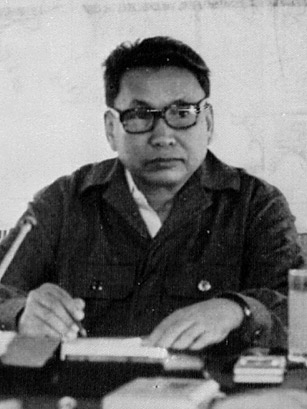
It took a while before the super great leap forward was officially announced, but you can now probably see just how dire the situation was. The country was in ruins, the people displaced from their necessary jobs and with US aid now stopped, famine was inevitable. Even worse, the Khmer Rouge was now in a position of holding two million people they considered ‘traitors’. The most important first thing was to disperse the mob and bring them under control, which was one major reason for the ‘death march’ out of the cities, where all citizens were marched at gunpoint into the countryside, where many old and infirm simply died along the way.
All money and market activity was essentially banned, something which no other communist revolution ever tried to do immediately. Typically, there’s an expected period of transition so that people keep doing their jobs and the economy can prepare itself for more radical change later, when it’s secure to do so. But not here. Everyone was pushed out into communal farms, where the reward for collective work was being allowed to eat at the communal kitchens. New people, of course, were often distrusted and even reviled in the case of those who never grew up as farmers and thus couldn’t help, leading to many being denied food or executed as saboteurs.
While the first post-revolution harvest was a surprising success, perhaps even strengthening the regime’s control by showing it could have SOME success, the country was still in ruins, mostly diplomatically isolated and struggling in vain to recover. By the time of the second harvest, everything went to hell. Starvation ran rampant and executions mounted. Attempted rebellions were responded to with collective punishment, leading to the birth of the ‘killing fields’, tracts of land devoted to mass-executions and leaving behind piles of bones to prove the scale of the atrocities. It seemed clear, even to the Khmer Rouge leaders, that something had to give.
The Four Year Plan
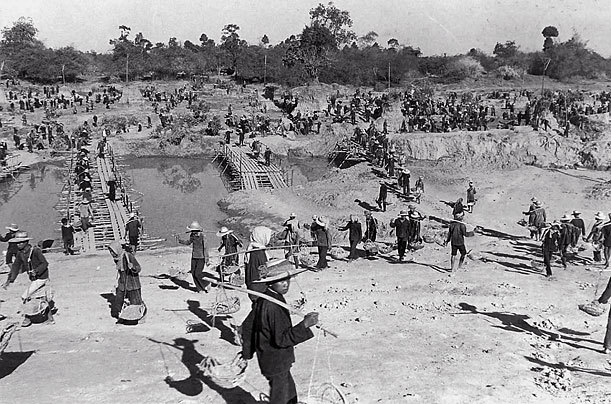
In 1976, with the revolution complete and the first harvests carried out, the Khmer Rouge was able to take stock and look at what they had and what to do with it. From this, they established their first and only ‘four year plan’, set to last until 1980 which became known as the super great leap forward. Inspired by the five year plans of the USSR and China (expected to be four years because, naturally, the Cambodian revolution is just so much better), it marked the official roadmap for the entirety of ‘Democratic Kampuchea’s functional existence, never entirely fulfilled as Vietnam invaded in December of 1978, overthrowing the regime in early January. But we get ahead of ourselves…
The purpose of the plan can be summed up in one key slogan. “If we have rice, we have everything.” Seeing Cambodian agriculture as the key to economic recovery as well as renewal of the nation, the first four year plan focused on it to the exclusion of all other priorities. As one source notes, 100,000 tons of rice could net the government $20 million while 500,000 tons could earn $100 million. A curiously capitalist way of looking at the plan, especially from a regime that had banned all forms of money internally. To help attain this, a goal was set to achieve a national average of three tons of rice per hectare. For context, the pre-war average was one.
Now here’s the issue. This was practically unheard of in most of Cambodia. With no machinery, the ravages of an unrelenting war and a large number of workers who had no farming experience, the goal remained unattainable which Khmer Rouge cadres typically explained away as a product of sabotage, not their own wrong-headed policy. So naturally, many were executed for perceived sabotage and work became longer and harder to try and make up the difference. To try and avoid reprisals from the party centre, local village leaders would increasingly use the collective’s own food supply to meet the export targets, leading to successful harvests still causing famine.
What really didn’t help was where the plan was mainly focused. Party documents explained that the focus for the super great leap forward would be on the north-western ‘zone’ primarily, out of seven zones in the country. Indeed, the north-western zone was the traditional rice-growing region of Cambodia, but in an effort to bolster forces for production in the zone, this is where the majority of ‘new people’ were sent, eventually leading to 1.8 million (a quarter of Cambodia’s population) working there. Even worse, the state was to take half the value of rice from these regions, while only a quarter was taken from others. This made the north-western zone the centre of starvation and mass-murder of alleged saboteurs.
But what if you’re really lucky and you’re in a zone that has more experienced workers, more lucky weather and actually manages to reach the three ton goal? Well, the village then becomes a ‘model village’, hailed as a propaganda victory and… Is provided with an even higher production goal for next year. As I said, rice was produced at the expense of everything else. Many villages that through sheer luck reached their harvest goal one year were unwittingly dooming themselves to an impossible task for the next year. The super great leap forward in general seemed to base itself on reckless assumptions and naïve certainty.
The Super Great Leap Forward in Practice
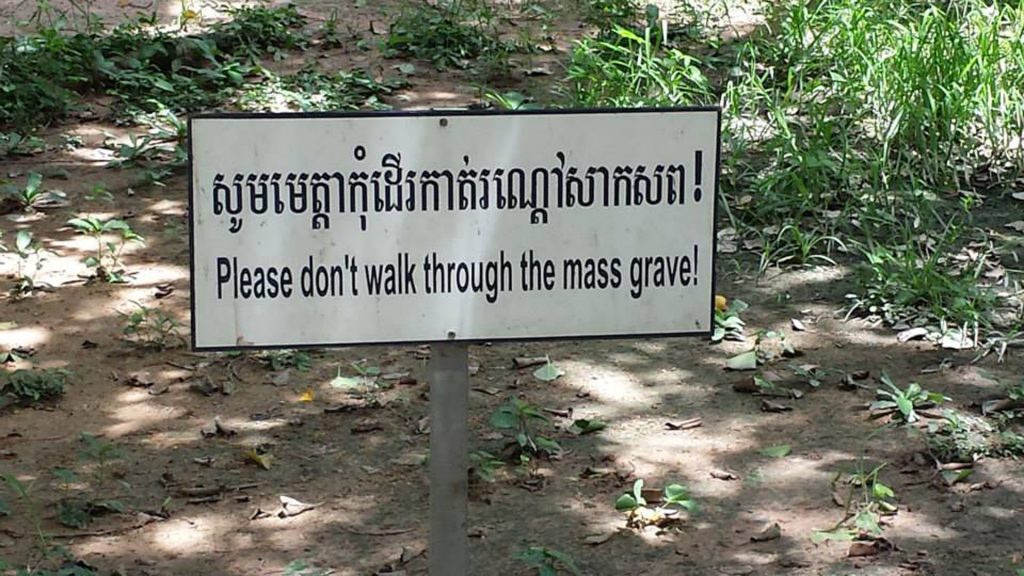
There was still some method to the madness, most notably the division of rice harvests into four sections. A portion was set aside for feeding the people (312 kilos per person per year, 0.85kg per day), some more set aside for seeding the next harvest, some more for emergency reserve and rest sold on the international market to, in theory, purchase modern machinery. But as I said before, it was very rare to actually reach the necessary amount needed for export, which was the lions share of every harvest. To make up for it, all three other sections were frequently dipped into to make up the difference, sacrificing long-term survivability for short-term gains.
Still, the Khmer Rouge understood that the super great leap forward couldn’t just be suggested as some idea of what targets to hit. To actually reach those goals, society needed to be uprooted and transformed, not in the service of socialism, but in the service of harvesting rice. The economic plan thusly attempted to rigidly structure village life in service of the harvest. The material requirements for life weren’t left up to the people living there, rather they were decided by the plan. Among the few basic items listed were clothes, bedding, mosquito nets, cups, plates, spoons, shoes, raincoats, lamps, etc. Mostly very basic, generalised items.
By the plan’s own admission however, even these basic necessities were hard to guarantee. It was planned that from 1977 onwards, everyone would have ’50-100% material necessities’. The fact that the overly optimistic regime couldn’t even say 100% for definite would suggest things were far more dire. As the only overt goal was to raise rice production, it’s likely that it was intended to fund these necessities with reserve rice, which we’ve established was used for export to meet the financial goals of the government, leaving many villages without even basic necessities. For other basic needs like the development of the collectives themselves, the intense workload made it impossible to devote time and energy to such development.
A major effort to serve the super great leap forward was a massive irrigation project. This makes sense, seeing as it’s hard to grow crops in dry, barren ground, so much of the most backbreaking labour was in developing dikes and canals. But remember how I mentioned that professionals and the highly-educated were most often persecuted and forced into hiding? Well this led to the local irrigation plans being woefully inadequate, often wasting massive amounts of time only to flood rice paddies and ruin massive amounts of crops. The response? Repression of ‘saboteurs’, as this neatly deflected any blame from Khmer Rouge cadres or the fundamental flaws of the plan itself. The famine situation only compounded alongside the rising repression.
What’s worth noting at this stage is that, again, the first post-revolutionary harvest was actually pretty good. By not yet setting so much singleminded focus on rice production, villages and communes were much more free to tackle local problems as they arose. One could quite seriously argue that without the ‘super great leap forward’, Cambodia might have stabilised and developed more genuine mass support. Of course there were plenty of other underlying problems (as mentioned in my earlier long series on the Khmer Rouge as a whole), but it’d be false to claim that the country was doomed for famine and repression as soon as the Khmer Rouge won.
Everything Goes to Hell
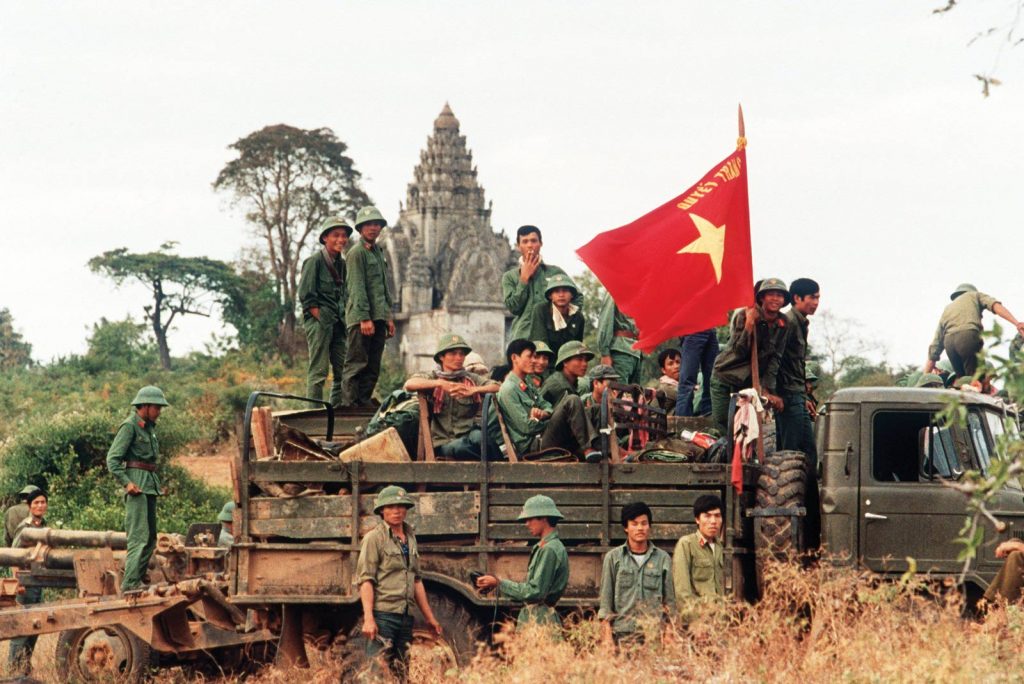
By mid-1977, famine was endemic and the ‘super great leap forward’ seemed like a sick joke. Pressures mounted on the struggling north-western zone and in the Pol Pot clique’s paranoia, cadre were sent in from other zones to conduct a political purge of suspected saboteurs, both among the peasantry and the party itself. When the famine repeated the following harvest, it was decided that the wrong people had been killed last time, so different cadre were brought in to repeat the purge. Suspicion of the ‘new people’ mounted and where executions may have been occasional prior to the super great leap forward, they now became regular, in larger scale and with less justification needed.
Even worse was the growing resentment of Vietnam. While the party initially feared the alleged saboteurs were either merely politically reactionary from their pre-revolutionary class or in the pocket of the west, aim was increasingly taken at those the party felt were influenced by Vietnam. As I’ve mentioned in the earlier blogs, the Khmer Rouge’s leadership was marked by a seething hatred for Vietnam, viewing them as imperialists who only wished to dominate Cambodia. In 1978, the comparatively calm and prosperous eastern zone was besieged by party hardliners, driving many of their own forces into exile in Vietnam where they began to form an opposition government. Many citizens of the eastern zone were killed or deported to the feared north-west.
It became clear by this point that the plan to use rice profits to buy new machinery and begin industrialisation was essentially a lie. Far more often, money was being spent in arming the Khmer Rouge military in preparation for a needless war with Vietnam. Skirmishes along the border began in 1977 and heightened in 1978, increasingly leading to Vietnamese punitive attacks in Cambodian territory. Despite the fact that the Cambodian army was small, ill-equipped and often outright starving, it would appear the party leadership either didn’t know this or didn’t care. The party boasted of being able to wipe out the Vietnamese people in their entirety, only to inevitably bite off more than they could chew.
In mid-1978, perhaps realising that the last few years were an abominable failure, there was a rare relaxation of policy. Experts, technicians, professionals of all stripes who had previously been forced to hide their history to escape execution were suddenly embraced by the party. They were encouraged to return to Phnom Penh, the ghost-capital of a starving hellscape to begin preparations for industrialization. Given what became of the party after its fall, it seems likely that this was an attempt to backtrack earlier (false) pretensions of Maoism and re-embrace the old political enemies to rally greater opposition against Vietnam. It was too little, too late.
In December of 1978, Vietnam launched a full invasion of Cambodia, aided in large-part by former Khmer Rouge cadre who most likely would have remained on the Cambodian side were it not for the super great leap forward. Within a matter of days, the Cambodian army had been nearly wiped out and forced to shift to insurgency tactics. Within a few short weeks, the Khmer Rouge leadership fled Phnom Penh by helicopter ahead of the advancing Vietnamese army. The super great leap forward came to an end with Cambodia plunged into yet another crippling famine, leaving the occupying Vietnamese forces to try and clean up the mess amidst a Khmer Rouge insurgency, foreign sanctions and a brief war with China.
Conclusion
The Super Great Leap Forward was a complete and total failure. It was wrong-headed from its inception, made worse by the realities on the ground and ultimately, even the abridged four-year plan couldn’t make it to its natural end. Likely for the good of the Cambodian people, as one can only imagine what the second four-year plan might have entailed. In an ironic twist of fate, Pol Pot and his clique only managed to bring their worst fears to reality, as a previously complacent Vietnam now found itself occupying Cambodia, while previously Khmer Rouge aligned cadres had become the Vietnamese ‘puppets’ that the party always feared.
While Cambodia would continue to struggle with lack of development and poverty, the 1980s saw a rapid rise in living standards from the bloody Khmer Rouge years and more traditional Soviet-style economic planning replaced the super great leap forward. The Khmer Rouge, meanwhile, rapidly dropped remaining pretence of socialism and shifted to a long-running, bloody insurgency under a bourgeois nationalist banner. The starvation of the Khmer Rouge era managed to not be repeated in the territory they still held, as no such idiotic export-policies were pushed for, nor were they possible.
That is, after all, perhaps one of the most ironic failures of the super great leap forward. In terms of increasing rice production, it actually did succeed. While floods devastated many harvests, hunger left fields unsown with rice and the tragic lack of experience of the ‘new people’ led to many botched farming techniques, there was plenty of rice to go around! It simply didn’t go around. Rice was taken out of the mouths of the hungry and exported to other countries (often capitalist countries, it should be noted) to enrich the xenophobic, paranoid Pol Pot clique. By simply avoiding this export, the people could eat and thus, they could actually develop their livelihoods.
The super great leap forward was a lot of things. It was a failure. It was an atrocity. It was downright embarrassing in its economic and political naivety. It was arrogant, not just in its name but in its assertions that it could do in four years what many socialist countries failed to do in the usual five. It squandered the potential of what was, despite popular conception, a broadly popular revolutionary movement until after the war was over and essentially marked the undoing of the Khmer Rouge regime as a whole. Beyond everything else, it was downright anti-communist. But that… Is an argument for another day.





